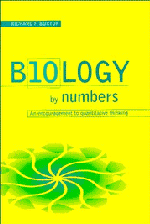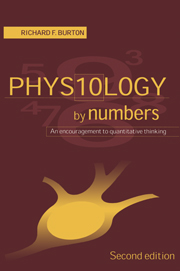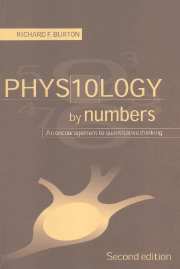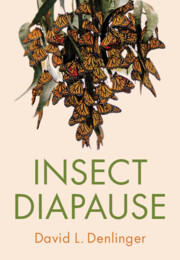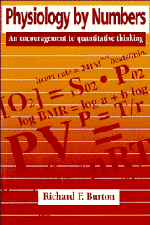Biology by Numbers
Biologists are notoriously reticent about using mathematics. This textbook is both an introduction to quantitative biology and a guide for the number-shy. Richard Burton fosters a sense of the fundamental importance and usefulness of mathematical principles in biology, with a fascinating range of examples. The book is geared towards the non-mathematician, and covers the basics as well as various more advanced topics from many diverse biological disciplines. Questions and calculations encourage active participation without holding up the reader. A key feature is the structure of the book. Rather than building it around biological disciplines, Dr Burton emphasises the common ways of reasoning used in areas as diverse as insect and population growth, seed mortality and sensory response (to mention a few that use logarithms). Written primarily for beginning undergraduates, this enlightening text will also be an essential aid for students throughout their undergraduate and graduate years.
- Written for the number-shy undergraduate, a common species of biologist, and assumes minimal maths ability
- Takes the approach of explaining why maths is a powerful tool in biology rather than just rote learning of exercises
- The author wrote the popular text Physiology by Numbers widely adopted for biology and medicine courses
Reviews & endorsements
'As a gentle introduction to mathematics for the numerically phobic biology undergraduate, Richard Burton's Biology by Numbers could hardly be bettered. Well-chosen examples take the agony out of algorithms and the confusion out of calculus.' New Scientist
'If you have ever fancied doing some biologically relevant maths, but haven't known how, this could be a good place to start.' John A. Lee, Biologist
'The book contains lots of examples of numerical common sense that bring biology to life. Thre is a wealth of information to be learned too.' Hugh Fletcher, Journal of Biological Education
'… I recommended this book to fill a gap in undergraduate teaching about number crunching - I'll be using it.' Australian Journal of Ecology
Product details
February 1998Hardback
9780521571562
256 pages
235 × 157 × 21 mm
0.522kg
64 b/w illus. 12 tables
Available
Table of Contents
- Preface
- A guide to the book
- 1. Putting two and two together
- 2. Units, formulae and the use of old envelopes: confronting some obstacles to quantitative thinking
- 3. Aspects of energy metabolism
- 4. Getting things in proportion
- 5. Perilous percentages, dangerous ratios
- 6. Building a trophic pyramid
- 7. Sodium in animals and plants
- 8. Exchanges of water and carbon dioxide
- 9. A geometric series
- 10. Introduction to logarithms
- 11. Bringing logarithms to life
- 12. Exponential relationships
- 13. Aspects of allometry
- 14. More on allometry, and on quantitative patterns in nature
- 15. How the abundance of food affects rates of feeding
- 16. The characterization of trees and other branching systems
- 17. Epilogue
- References
- Notes
- Index.

